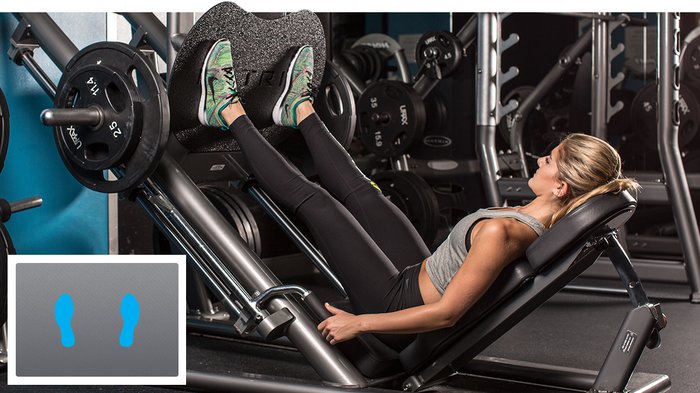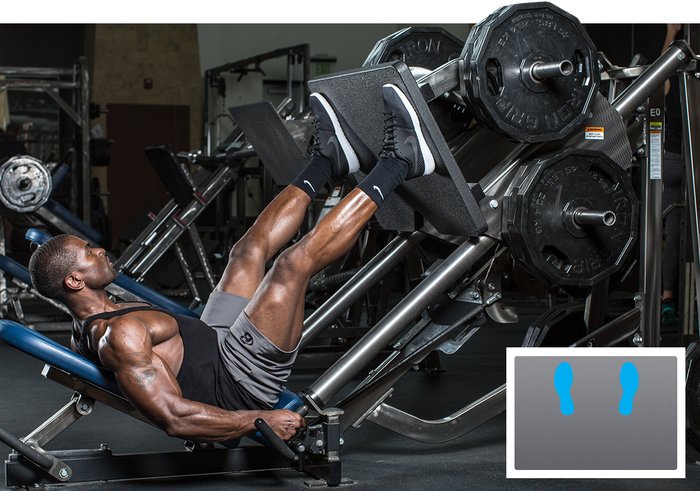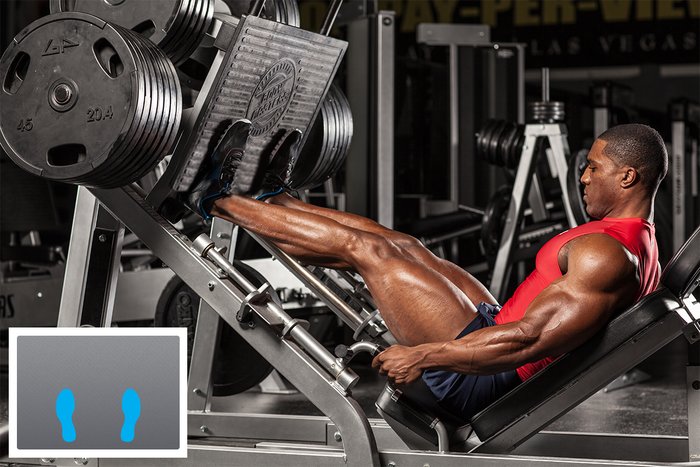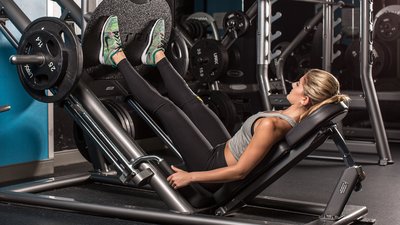While the barbell squat is widely considered the king of all leg exercises, the leg press—another effective and popular leg builder—is definitely in the royal family. Even though it's easy to load up some plates and press with abandon, where you place your feet on the leg-press sled is actually an important decision.

A mid-sled foot position allows the focus to remain on the quads, glutes, and hamstrings about equally.
Most leg-press platforms allow you to place your feet high, low, wide, narrow, or any number of combinations in between. Which combination you choose can actually change which muscles the leg press targets, making this exercise extremely versatile!
1. High Foot Placement
Placing your feet higher increases the degree of hip extension and flexion while reducing the range of motion around the knees. What's this mean? Simply put, you'll feel an increased stretch in the hams and glutes, making them capable of a stronger contraction. In other words, if you want to emphasize your glutes and upper hamstrings when leg pressing, use a high foot position.

Go higher on the sled to increase the degree of hip flexion and extension while reducing the range of motion around the knees. That more strongly targets the glutes and hams.
Of course, this shift in focus is not absolute—you can't truly isolate one muscle over another, so your quads—and especially your vastus medialis, or "tear drop" muscle—will still do a lot of the work. Also, since you're seated during a leg press, your upper hamstrings and glutes still won't receive the same activation you'd get with a standing exercise like a squat.
2. Low Foot Placement
A lower foot placement reduces the degree of hip extension and flexion while increasing the range of motion around the knees. That means you get more quad activation and less involvement form the glutes and hams.

Positioning your feet toward the bottom of the sled makes the quads work harder while reducing the stimulation of the muscles that attach at the hip: the upper hams and glutes.
Keep in mind that increasing the muscular stress on your quads also means the knees get subjected to greater stress. A very low foot placement on the sled increases the risk of your knees passing the plane that comes out from your toes. While this isn't inherently problematic, lifters with pre-existing knee injuries or pain may find this foot position uncomfortable and should be especially careful.

